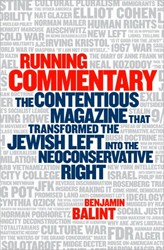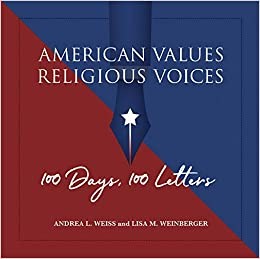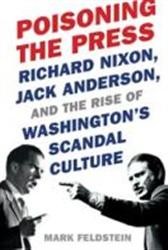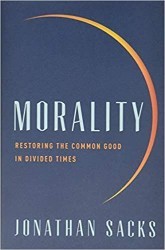The Curious Case of Kiryas Joel examines a case involving the ultra-Orthodox community of Kiryas Joel, a village adjacent to the town of Monroe in Orange County in New York. It is a “curious” case because, as its authors note, it involved individuals who had chosen to isolate themselves from the temptations of modern American life while simultaneously insisting on government accommodation to and financial support of their unique lifestyle.
Kiryas Joel was founded in 1975 by the Satmar Hasidic sect and was named for its religious leader, Rabbi Joel Teitelbaum. Kiryas Joel grew rapidly because of its residents’ high birth rate and the influx of Satmar Hasidim from Brooklyn. It soon had a significant number of children with learning disabilities requiring special education services.
Initially these services were provided by the Monroe-Woodbury Central School District, which sent public school teachers into the religious schools of Kiryas Joel. This was discontinued, however, after the 1985 Supreme Court decision in Aguilar v. Felton forbade the use of federal funds for educational programs held in parochial schools, requiring students in need of these service to enroll Monroe’s public school’s programs. Kiryas Joel parents feared that sending their children to Monroe schools would lead to the acculturation of non-Jewish values and practices. On one occasion they were shocked to learn that their children were participating in a Christmas program.
Kiryas Joel’s problems were seemingly solved in 1989 when Governor Mario Cuomo signed a bill creating a separate school district for the village, thereby making it eligible to receive funds from the state. Little thought was given at the time to the likelihood that creating the Kiryas Joel Village School District violated the separation of church and state, or that it might create a precedent for other religious communities to demand similar school districts of their own.
The Kiryas Joel Village School District was unique. While elected municipal officials in the cities of New York, Buffalo, Rochester, Syracuse, and Yonkers controlled education, this was not true in the hundreds of villages and towns of the state, where education was the responsibility of school districts. The rationale for this separation of education and municipal oversight was to preserve the independence of those responsible for making educational decisions. As a result of the 1989 law, however, Kiryas Joel because the only village or town in the state whose borders were identical to that of a school district. This ran counter to the logic of separating education from municipal government, since the rabbi of Kiryas Joel determined policy in both areas.
The 1989 law was immediately challenged in court by Louis Grumet, the executive director of the New York State School Boards Association. He has now co-authored a fascinating account of the history of Kiryas Joel Village School District v. Grumet. Grumet appreciated the financial burdens placed on Kiryas Joel parents with special needs children, but, he argued, this did not justify breaching the separation of church and state. The law, Grumet said, “enabled a politically powerful group to determine that government funds could be spent to ensure that a religious group could be segregated from the broader community.” It subsidized a theocracy of religious fundamentalists despite a provision in the Constitution of the State of New York — specifically the Blaine Amendment, which states that “Neither the state nor any subdivision thereof shall use its property or credit or any public money[…] directly or indirectly, in aid or maintenance[…] of any school or institution of learning wholly in part under the control or direction of any religious denomination.” The 1989 law, in Grumet’s view, did not involve marginal church-state issues, but was instead a direct challenge to the First Amendment’s categorical ban on the establishment of religion.
The lifestyle of the Satmar beneficiaries of the 1989 law also disturbed Grumet. Why, he wondered, should New Yorkers promote the interests of a religious group that “relegated women to second-class citizenship,” rejected modern science, and viewed outsiders with contempt? He also feared that legislation such as that of 1989 would encourage the charter school movement, lead to educational ghettos, and divert state funds from the public schools.
Grumet is cynical regarding the motivations of the governor and the New York legislators in pushing through the school district legislation. It was done, he believes, to curry political favor with the voters of Kiryas Joel. The litigation brought by Grumet resulted in several state and federal court cases between 1992 and 1994, including a hearing before the United States Supreme Court. The state and federal courts overturned the 1989 initial law as well as two additional laws which essentially attempted to do the same thing. Finally, in 1999 the state court accepted the fourth attempt by the New York legislature to assuage the needs of Kiryas Joel. This law was more general and applied to any New York municipality with a population between 10,000 and 25,000 inhabitants. This satisfied the United States Supreme Court’s demand that the benefits resulting from establishing a school district must be offered in a neutral manner to all communities and not merely to the Satmar residents of Kiryas Joel. Among these new districts was the Kiryas Joel Village Union Free School District, whose only school serviced approximately 250 special needs students. Grumet would have preferred a law limiting the ability of Kiryas Joel’s leaders to manipulate the political system rather than the 1999 law, which merely opened the doors to other religious groups.
There is an element of irony in the fact that these persons, who live, by and large, on the margins of American society, have been so successful in making their voices heard in Albany and Washington. Grumet is quite critical of the political activities of Orthodox leaders, including the “theocratic” leaders of Kiryas Joel, for gaming the system to advance the interests of their communities by perfecting the longstanding political art of lobbying and log-rolling.Though pleased that his efforts temporarily strengthened the Establishment Clause, he is sceptical whether the courts will be able to withstand pressures coming from religious right. “As I look back,” Grumet recalls, “I see that Kiryas Joel was a crucial benchmark at a critical juncture. I am certain both Jefferson and Madison would applaud the bottom-line result of the case, and equally certain that they would be gravely troubled by what has occurred since.”
Related Content:





